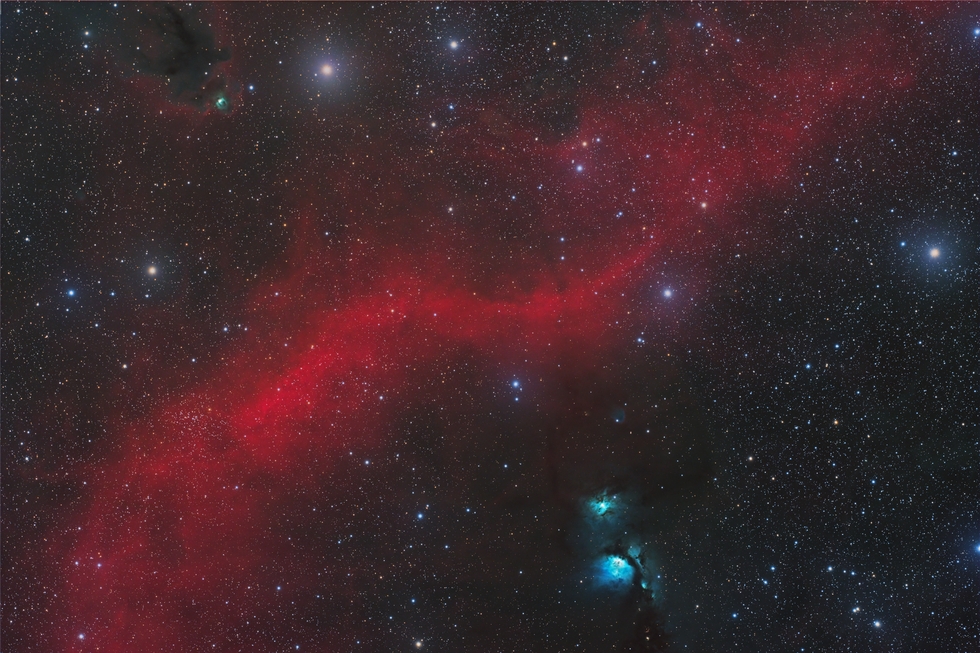Some of the Hunter's Jewels (M 78 to Boogeyman)
Some of the Hunter's Jewels (M 78 to Boogeyman)
Middle – the star of the picture is Barnard’s Loop (Sh2-276), an elongated emission nebula in the shape of an arc encompassing most of the Orion constellation. It is part of the Orion molecular cloud complex, which contains also Orion Nebula (Messier 42) and Horsehead Dark Nebula (Barnard 33). The ionization is given by the young, energetic stars in the Orion Nebula. Apparently, this nebula was born after a supernova (or even hypernova) happened 2 million years ago, an event which created several runaway stars from a much more compact group – AE Aurigae, Mu Columbae and 51 Arietis have the same origin. The naming is in the honor of E.E. Barnard, a pioneering American astrophotographer who captured this nebula and described in 1894.
Top left – LDN 1622 (Boogeyman Nebula) is a dark nebula which stand out on the glowing hydrogen background, most likely because it’s closer to us. On the tip of the nebula, we can see vdB 62, a reflection nebula which stands out even more on the dark, dusty area.
Bottom right – Messier 78 is a reflection nebula located 1.350 light-years away. It is the brightest reflection nebula in the Orion B molecular cloud, and it’s reflecting light from HD 38563A and HD 38563B, giant B-type blue stars. 45 T-Tauri stars have been found here, very young protostars in the contracting phase, right before entering the main sequence, and 17 Herbig-Haro objects (very young stars which still have nebulosity around them and emit powerful jets of ionized gas). Slightly above M 78, NGC 2071 is a smaller reflection nebula which is part of the same region.
Bottom left – NGC 2112 is an open cluster much further away than Barnard’s Loop, 2.800 light-years away, being partially obscured by the ionized gas.
Top left – LDN 1622 (Boogeyman Nebula) is a dark nebula which stand out on the glowing hydrogen background, most likely because it’s closer to us. On the tip of the nebula, we can see vdB 62, a reflection nebula which stands out even more on the dark, dusty area.
Bottom right – Messier 78 is a reflection nebula located 1.350 light-years away. It is the brightest reflection nebula in the Orion B molecular cloud, and it’s reflecting light from HD 38563A and HD 38563B, giant B-type blue stars. 45 T-Tauri stars have been found here, very young protostars in the contracting phase, right before entering the main sequence, and 17 Herbig-Haro objects (very young stars which still have nebulosity around them and emit powerful jets of ionized gas). Slightly above M 78, NGC 2071 is a smaller reflection nebula which is part of the same region.
Bottom left – NGC 2112 is an open cluster much further away than Barnard’s Loop, 2.800 light-years away, being partially obscured by the ionized gas.
SPECIFICATIONS
Telescope
Takahashi FSQ-106ED f/3,6
Camera
QHY 600M
Location
Australia
Date of observation
December 2023
Filters
HaLRGB
Processing
PixInsight



